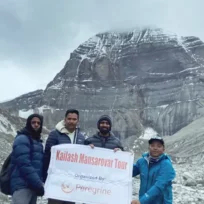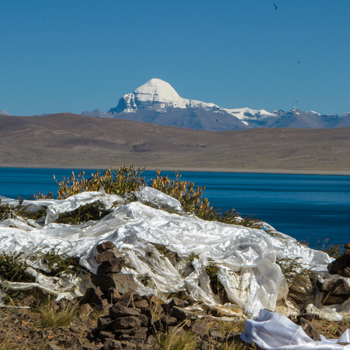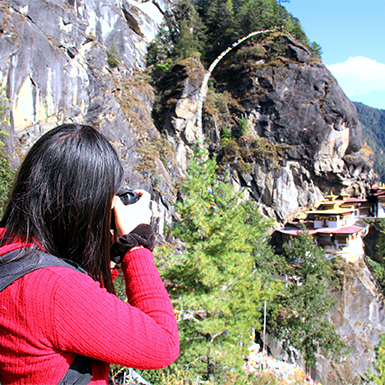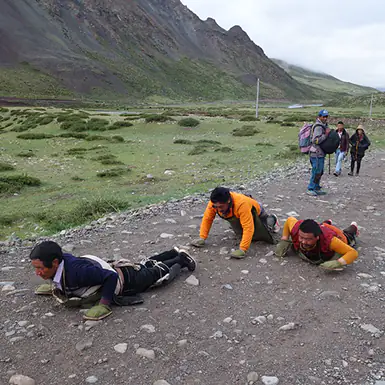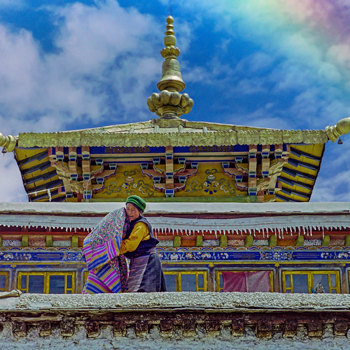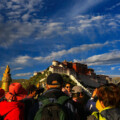Tibet, also known as “The Roof of the World,” enthralls visitors with its breathtaking juxtaposition of cultural and geographical marvels. Perched atop the Himalayas, this autonomous region of China boasts dramatic landscapes that leave you speechless. Places to visit in Tibet range from the majestic Potala Palace, a UNESCO World Heritage Site, to serene turquoise lakes like Yamdrok Tso. Beyond the stunning scenery, a rich tapestry of Tibetan Buddhist traditions unfolds, offering a glimpse into a unique way of life. Prepare to be captivated by the vibrant prayer flags fluttering in the mountain breeze, the echoing chants from ancient monasteries, and the warmth of the Tibetan people.
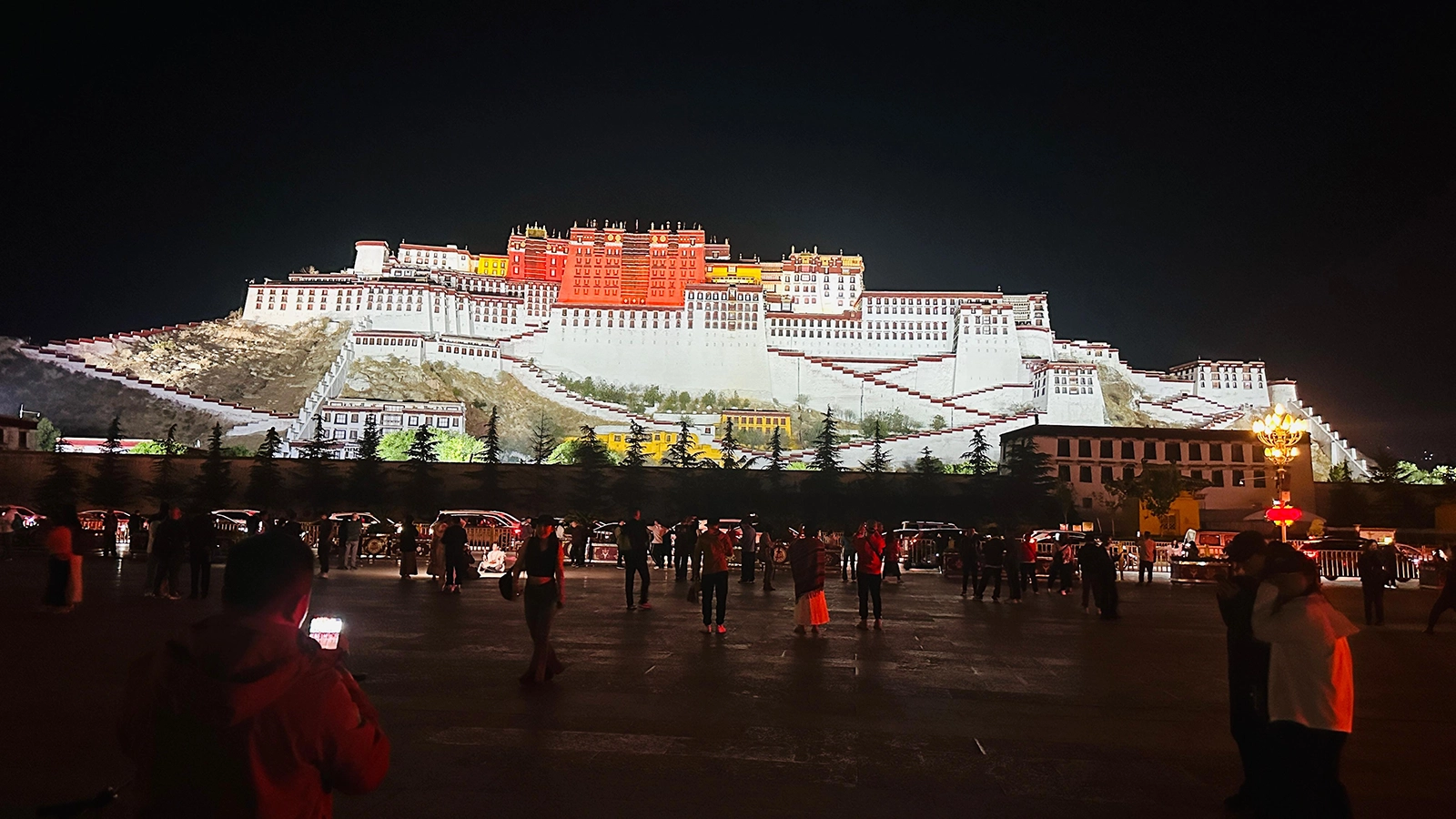
Cultural Treasures:
- Monasteries: Tibet is dotted with magnificent monasteries, each a testament to the region’s deep Buddhist heritage. Explore the Potala Palace, the former residence of the Dalai Lama, or witness the daily debates held by monks at Sera Monastery.
- Temples: Jokhang Temple, Lhasa’s holiest shrine, is a must-visit. Witness pilgrims circumambulate the temple while soaking in the vibrant atmosphere.
- Festivals: Experience Tibetan culture by attending a celebration. The Shoton Festival features a spectacular butter sculpture exhibition, while the lively Nachu Horse Racing Festival showcases horsemanship and traditional attire.
Natural Wonders:
- Mount Everest and Kailash: Witness the world’s highest mountain, Mount Everest, and a sacred pilgrimage around Mount Kailash, revered by multiple religions.
- Lakes: Hike around the turquoise waters of Namtso Lake or admire the otherworldly beauty of Yamdrok Tso, known for its mesmerizing colors.
- Yarlung Tsangpo Grand Canyon: Take in the breathtaking views of this colossal canyon, which is even more profound than the Grand Canyon in the United States.
Planning Your Trip
Research permit requirements and travel restrictions in advance, as Tibet has specific tourist regulations. Consider acclimatization to the high altitude and pack appropriate clothing for the varying temperatures.
Tibet’s tourist attractions offer a chance to delve into a world of cultural richness and breathtaking beauty. With careful planning, your visit to this extraordinary destination will be unforgettable.
Lhasa: A Cultural Tapestry Woven in the Heart of Tibet
Lhasa, the capital city of Tibet, pulsates with a vibrant energy that blends ancient traditions with captivating beauty. This city serves as the heart of Tibetan culture, boasting renowned Tibetan tourist attractions like the Potala Palace and Jokhang Temple. Prepare to be mesmerized by Lhasa’s unique atmosphere as you explore these essential destinations:
The Potala Palace: A Beacon of History and Splendor
This UNESCO World Heritage Site reigns supreme as the crown jewel of Lhasa. Dominating the skyline of Lhasa’s iconic landmark, the Potala Palace housed the Dalai Lamas during winter. Delve into its magnificent architecture, including the Potala Palace Museum, which houses a treasure trove of artifacts and thangkas (traditional Tibetan scroll paintings).
Visitor Tip: For a hassle-free visit, consider purchasing tickets online in advance, particularly during peak tourist seasons
Jokhang Temple: A Spiritual Sanctuary
Considered the spiritual epicenter of Lhasa, the Jokhang Temple is a revered pilgrimage site for Tibetan Buddhists. Be awestruck by the intricate golden roof and witness pilgrims engaged in the traditional practice of circumambulating the temple.
Cultural Highlight: Remember the daily yak butter tea ceremony, a unique cultural experience that offers a window into Tibetan customs.

Barkhor Street: A Cultural Kaleidoscope
Thrumming with life, Barkhor Street is a vibrant artery that pulsates through the heart of Lhasa. Encircling the Jokhang Temple, this pedestrian street is a haven for shoppers seeking Tibetan handicrafts, prayer wheels, and local souvenirs.
Indulge in the flavors of Lhasa by savoring local Tibetan cuisine at a streetside stall, or enjoy a cup of yak butter tea at a traditional teahouse.
Exploring these captivating places to visit in Tibet, within Lhasa, offers a glimpse into the soul of Tibetan culture. The city’s unique blend of historical and cultural experiences promises to create memories that will stay with you forever.
Mount Kailash: A Beacon of Holiness for Millennia
Towering over the Tibetan plateau, Mount Kailash is a legendary peak revered by multiple religions. This majestic mountain, also known as Kangrinboqe, holds immense significance for Hindus, Buddhists, and Jains, making it one of the most captivating tourist attractions in Tibet. Here, we explore the mountain’s religious importance and offer practical tips for undertaking the Kora pilgrimage.
A Convergence of Faiths:
- Hindus: Revered as Lord Shiva’s abode, Mount Kailash is believed to be the center of the world. Devout Hindus believe that circumambulating the peak (performing a Kora) brings immense spiritual merit.
- Buddhists: Mount Kailash represents Mount Meru, the mythical cosmic center for Tibetan Buddhists. Circumambulating the peak is considered a sacred act of purification.
- Jains: Jains revere Mount Kailash as the mountain where their first spiritual leader attained liberation.

The Kora Pilgrimage: A Spiritual Trek
The Kora pilgrimage is a 56-kilometer circumambulation around Mount Kailash. Thousands undertake this physically demanding yet deeply rewarding experience each year.
What to Expect:
- Terrain: The trek involves high altitudes (around 5,600 meters) and uneven terrain. Good physical fitness is essential.
- Weather: Temperatures can vary dramatically, so pack for all conditions.
- Accommodation: Simple guesthouses are available along the route.
Preparation Tips:
- Permits: Obtain necessary permits well in advance.
- Acclimatization: Spend time adjusting to the high altitude before starting the Kora.
- Guide: Consider hiring a reputable guide for safety and cultural insights.
- Respect: Dress modestly and be mindful of local customs and religious practices.
Completing the Kora pilgrimage is a profound experience that transcends religious beliefs. Witnessing the unwavering faith of pilgrims and the breathtaking beauty of the surrounding landscape leaves a lasting impression. Places to visit in Tibet, like Mount Kailash, unveil the mysteries of nature and delve into the vibrant tapestry of Tibetan traditions.
Namtso Lake: A Breathtaking Encounter with the “Heavenly Lake”
Cradled amidst the majestic Nyainqentanglha Mountains lies Namtso Lake, a jewel in the crown of Tibet’s tourist attractions. Often referred to as the “Heavenly Lake,” Namtso’s stunning turquoise waters and spiritual significance draw visitors from across the globe. This guide explores the lake’s natural beauty and offers insights on the best times to visit and activities to enjoy.
A Landscape of Enchantment:
- Otherworldly Beauty: Namtso is staggeringly large, stretching over 70 kilometers in length. The crystal-clear waters reflect the snow-capped peaks, creating a scene of breathtaking beauty.
- Spiritual Significance: Held sacred by Tibetan Buddhists, Namtso is one of the three holy lakes in Tibet. Many pilgrims start on a sacred circumambulation around the lake.
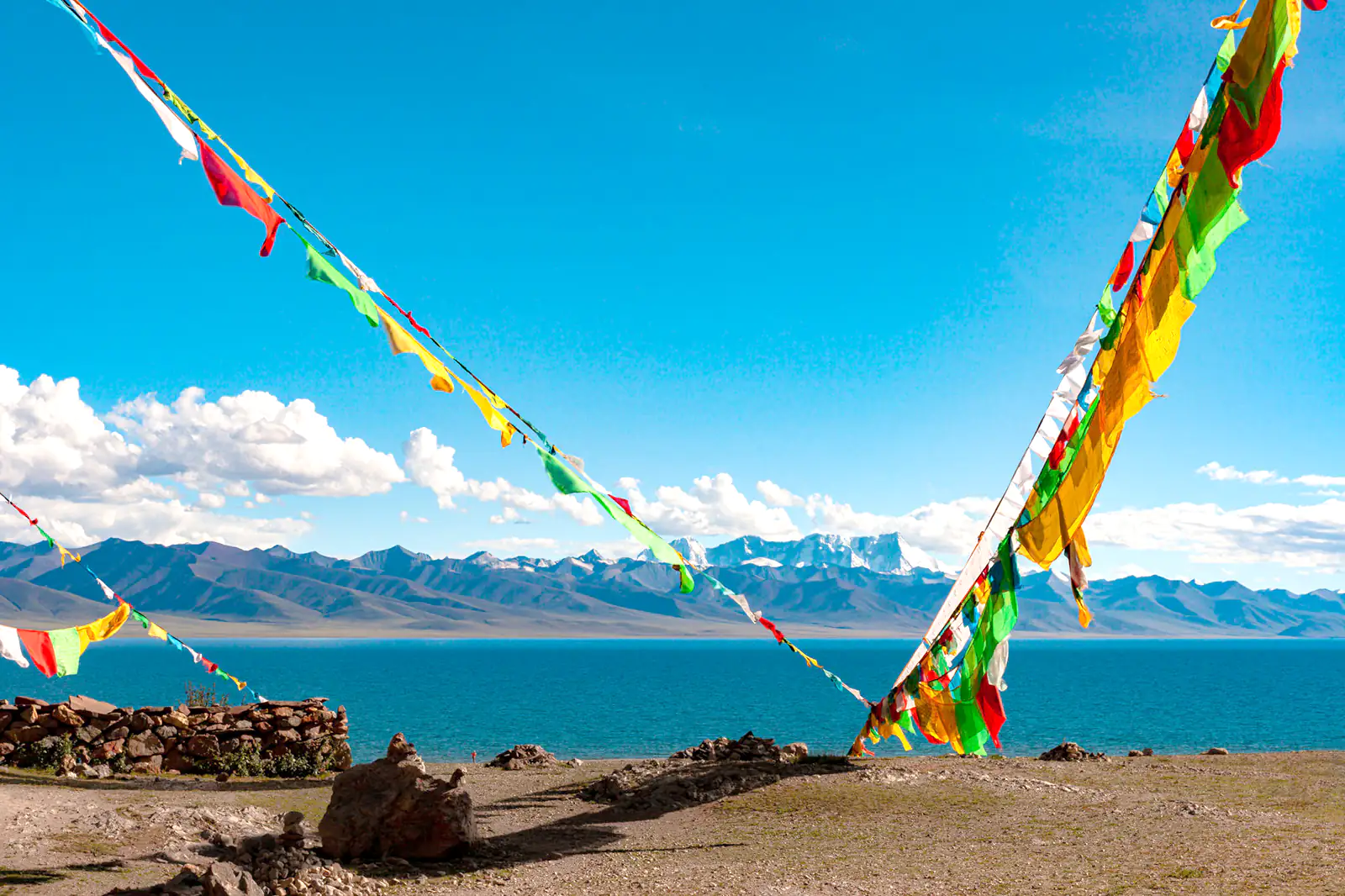
Planning Your Visit:
- Best Time to Visit: Pleasant weather and clear skies grace the summer months (June to August), making it ideal for experiencing the lake in all its glory. However, these months also see higher tourist volumes. Shoulder seasons (April-May and September-October) can be good alternatives with fewer crowds.
- Activities: Explore the lake’s shores on foot or by bike, soaking in the panoramic views. Horseback riding tours are also available, offering a unique landscape perspective.
Important Considerations:
- Permits: Foreign visitors require special permits to access Namtso Lake. Arrange these well in advance through a tour operator.
- Altitude: Namtso lies at a high altitude (over 4,700 meters). Allow ample time for acclimatization to avoid altitude sickness.
- Respectful Exploration: Dress modestly and be mindful of local customs and religious practices.
A visit to Namtso Lake is an unforgettable experience combining breathtaking scenery with a deep spiritual significance. Places to visit in Tibet, like Namtso Lake, offer a glimpse into the heart and soul of Tibet, leaving a lasting impression on every visitor.
Witnessing Everest’s Grandeur: A Guide to Everest Base Camp (Tibet Side)
Everest Base Camp (Tibet Side) sits at the foot of Mount Everest, the world’s mightiest mountain. This awe-inspiring location is a dream destination for many, drawing adventurers to witness the peak’s majesty firsthand. As one of the most prominent tourist attractions in Tibet, Everest Base Camp offers a challenging yet rewarding experience. Here, we explore the trekking routes, travel logistics, and essential tips for a safe and successful expedition.
Trekking the Roof of the World:
- Routes: Several routes lead to Everest Base Camp (Tibet Side), varying in difficulty and duration. The most popular route starts in Lhasa and follows the Friendship Highway, offering stunning scenery and acclimatization opportunities.
- Logistics: Most visitors opt for organized tours that handle permits, transportation, accommodation (often in tents), and meals.

Preparing for the Challenge:
- Acclimatization: Proper acclimatization is the key to a successful trek. Plan to spend time in Lhasa (3,650 meters) before ascending to higher altitudes.
- Physical Fitness: The trek involves moderate hiking and reaches high altitudes (around 5,200 meters), so good physical fitness is essential.
- Packing: Pack warm layers, sturdy hiking boots, and sun protection. Remember, weather conditions can change rapidly.
Safety First:
- Altitude Sickness: Familiarize yourself with altitude sickness symptoms. If you experience any discomfort, descend immediately for your safety.
- Equipment: Invest in good-quality hiking gear appropriate for cold and potentially wet conditions.
- Guides: Hiring a qualified guide, especially for first-time trekkers, is highly recommended. They can provide invaluable support and ensure your safety on the mountain.
Reaching Everest Base Camp (Tibet Side) is a remarkable feat that demands preparation and respect for the mountain’s power. The breathtaking views and the sense of accomplishment make it an unforgettable experience. Remember, places to visit in Tibet, like Everest Base Camp, offer a unique opportunity to challenge yourself and be humbled by the beauty of the Himalayas.
Yamdrok Lake: A Captivating Encounter with Tibet’s Turquoise Jewel
Nestled amidst snow-capped mountains, Yamdrok Lake shimmers like a precious turquoise gem. This captivating sight is a jewel in the crown of Tibet’s tourist attractions, drawing visitors with its stunning beauty and cultural significance. Here, we delve into the lake’s magic, offering photography tips for capturing its splendor and insights into its artistic and ecological importance.
A Feast for the Eyes:
- Panoramic Vistas: Several scenic viewpoints surround Yamdrok Lake, each offering breathtaking perspectives. The Yamdrok Lake Pass provides a dramatic vista of the turquoise waters stretching towards the distant mountains.
- Photography Tips: Early morning or late afternoon light creates the most vibrant colors in the lake. Consider using a polarizing filter for the most vibrant photos.

A Blend of Culture and Nature:
- Sacred Significance: Yamdrok Lake is revered by Tibetan Buddhists and believed to be a manifestation of a protective goddess. Many pilgrims visit the lake to pay homage.
- Ecological Haven: The lake is a vital habitat for diverse birdlife, including migratory birds that flock to its shores during winter.
Planning Your Visit:
- Accessibility: A short drive or tour bus ride from Lhasa makes the lake a convenient and popular day trip destination.
- Respectful Exploration: Dress modestly and be mindful of local customs and religious practices near the lake.
Yamdrok Lake offers a captivating glimpse into the heart of Tibet. Witnessing its beauty, cultural significance, and ecological richness makes it a must-visit among places to visit in Tibet. So, pack your camera, embrace the fresh mountain air, and prepare to be enchanted by the magic of Yamdrok Lake.
Unveiling Gyantse: Best Places to Visit in Tibet
Beyond the bustling streets of Lhasa lies Gyantse, a captivating town steeped in history and cultural treasures. A haven for those seeking unique Tibet tourist attractions, Gyantse offers a glimpse into the region’s rich past through its magnificent architecture and vibrant traditions. Here, we explore Gyantse’s most captivating landmarks: the imposing Gyantse Dzong and the architecturally stunning Palcho Monastery.
Gyantse Dzong: A Fortress Steeped in History
Towering over the town, Gyantse Dzong, also known as Gyantse Fort, is a colossal structure that once served as a military dzong (fortress-monastery). This magnificent building offers a fascinating glimpse into Tibet’s past:
- Historical Significance: Built in the 14th century, the Dzong was crucial in controlling trade routes and defending the region. Its imposing walls and strategic location stand as testaments to its former power.
- Visitor Information: Today, the Dzong houses a small museum showcasing artifacts and exhibits that offer insights into Gyantse’s history and culture. The rooftop provides visitors with breathtaking panoramic vistas of the town and the surrounding landscape.
Palcho Monastery: A Tapestry of Art and Architecture
Nestled below the Dzong, crowned a UNESCO World Heritage Site, Palcho Monastery stuns visitors with its unique architectural style and a treasure trove of artistic wonders:
- Architectural Marvel: Palcho Monastery comprises three distinct architectural styles – Tibetan, Uyghur, and Han Chinese – reflecting the region’s cultural exchange over centuries. Wander through its courtyards and marvel at the intricate brickwork and vibrant murals.
- Frescoes: The monastery’s walls are adorned with breathtaking frescoes depicting Buddhist deities, mandalas, and scenes from Tibetan history. These artworks offer a captivating window into Tibetan religious art and traditions.

Exploring Gyantse:
- Accessibility: Gyantse is located approximately 250 kilometers southwest of Lhasa and is easily accessible by car or tour bus.
- Cultural Experience: While exploring these landmarks, be mindful of local customs and dress modestly. Consider hiring a Tibet travel guide for a richer understanding of Gyantse’s fascinating history and cultural tapestry.
Gyantse offers a unique blend of historical significance and artistic beauty, making it a must-visit for those seeking off-the-beaten-path places to visit in Tibet. Explore the imposing Dzong, delve into the artistic treasures of Palcho Monastery, and discover the captivating story of this remarkable town.
Unveiling Shigatse: Cultural Tapestry and Gateway to Adventure
Shigatse, Tibet’s enthralling second-largest city, pulsates with a vibrant energy. This destination offers a captivating blend of historical significance and cultural experiences and serves as a gateway to other prominent Tibetan tourist attractions. Here, we explore the majestic Tashilhunpo Monastery and delve into the lively local markets, providing a glimpse into the heart of Shigatse.
Tashilhunpo Monastery: A Beacon of Tibetan Buddhism
Towering over the city, Tashilhunpo Monastery is a masterpiece of Tibetan architecture and a significant spiritual center. This must-visit site holds immense historical and spiritual importance:
- Rich History: Founded in the 15th century, Tashilhunpo Monastery was the seat of the Panchen Lama, the second-highest-ranking figure in Tibetan Buddhism. Explore its grand halls and admire the intricate artwork that adorns its walls.
- Spiritual Significance: Witness the daily ceremonies performed by monks, a captivating display of Tibetan Buddhist traditions. The highlight is the enormous gilded statue of Maitreya, the future Buddha.
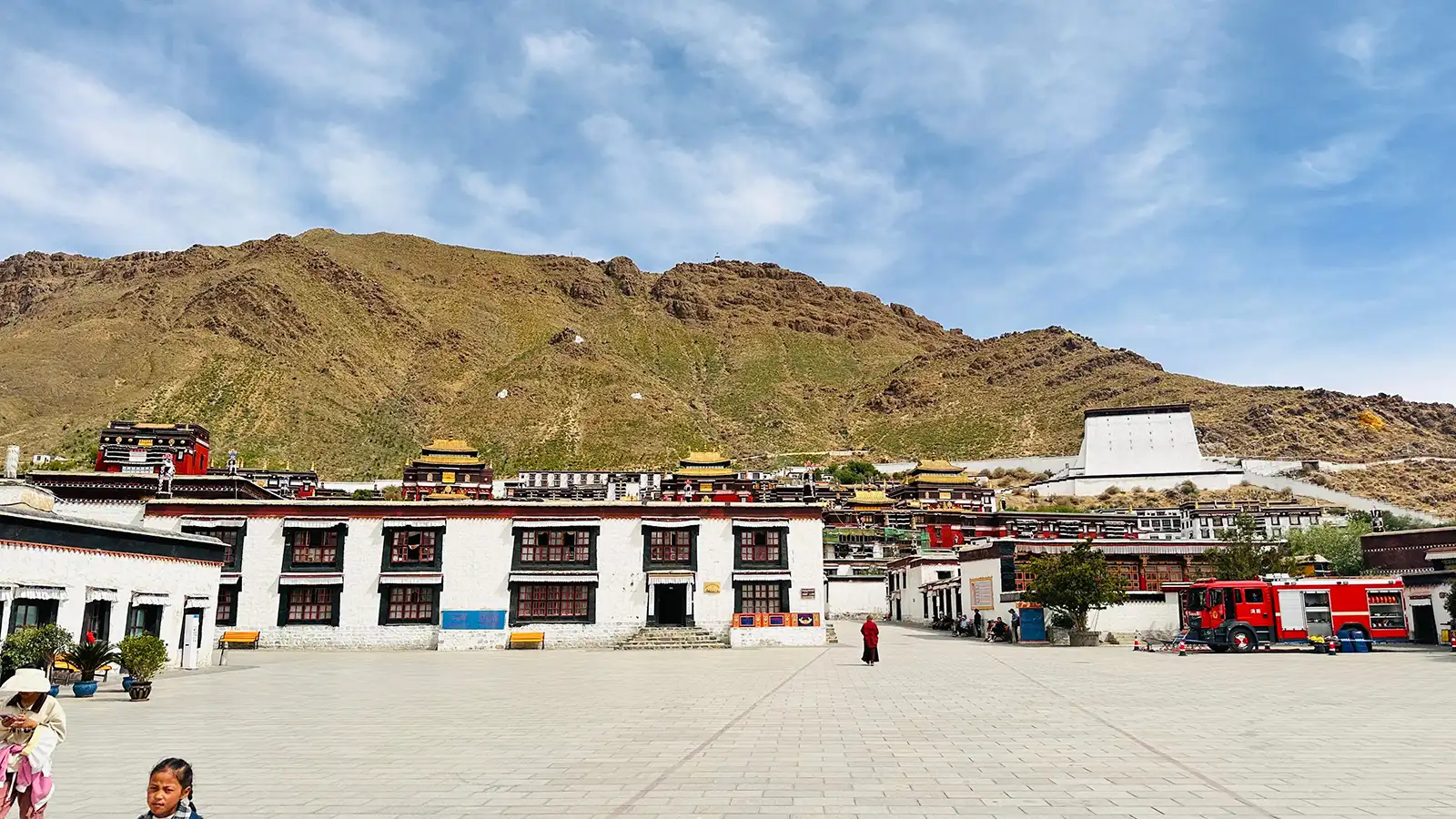
Shigatse’s Cultural Tapestry:
Beyond the monastery walls, Shigatse offers a vibrant cultural experience:
- Bustling Markets: Immerse yourself in the sights and sounds of the local markets. Haggle for Tibetan handicrafts, prayer wheels, and colorful fabrics, which reflect the region’s rich cultural heritage.
- Unique Experiences: Sample traditional Tibetan cuisine at a local restaurant or sip on yak butter tea, a regional staple beverage. Witnessing these traditions offers a deeper understanding of Tibetan life.
Exploring Shigatse:
- Location: Shigatse lies roughly 280 kilometers southwest of Lhasa and is accessible by car or tour bus.
- Respectful Exploration: Dress modestly and be mindful of local customs and religious practices while exploring the city.
Shigatse serves as a captivating introduction to Tibetan culture. Explore the magnificent Tashilhunpo Monastery, delve into the lively local markets, and discover the essence of Tibetan life. With its unique blend of history and cultural experiences, Shigatse offers a genuinely unforgettable stop for exploring places to visit in Tibet.
Unveiling the Echoes of Debate: A Guide to Sera Monastery
Sera Monastery, a majestic complex nestled near Lhasa, is renowned for its vibrant atmosphere and a unique tradition: the monk debates. This captivating spectacle is a highlight among many Tibet tourist attractions, offering a window into Tibetan Buddhist philosophy and monastic life. Here, we delve into the significance of these debates, provide tips for visiting, and highlight the best times to witness this enthralling event.
The Art of Debate: A Sharpening of Wisdom
For centuries, Sera Monastery has been a prestigious center for Buddhist learning. The daily monk debates are not mere contests but vital practices:
- Sharpening Wisdom: Monks hone their understanding of Buddhist scriptures and philosophy through debate. The lively arguments and emphatic hand gestures create a captivating spectacle.
- Observing the Debates: Visitors can witness the debates held in a designated courtyard. Monks from different colleges engage in lively discussions, often accompanied by rhythmic chanting.
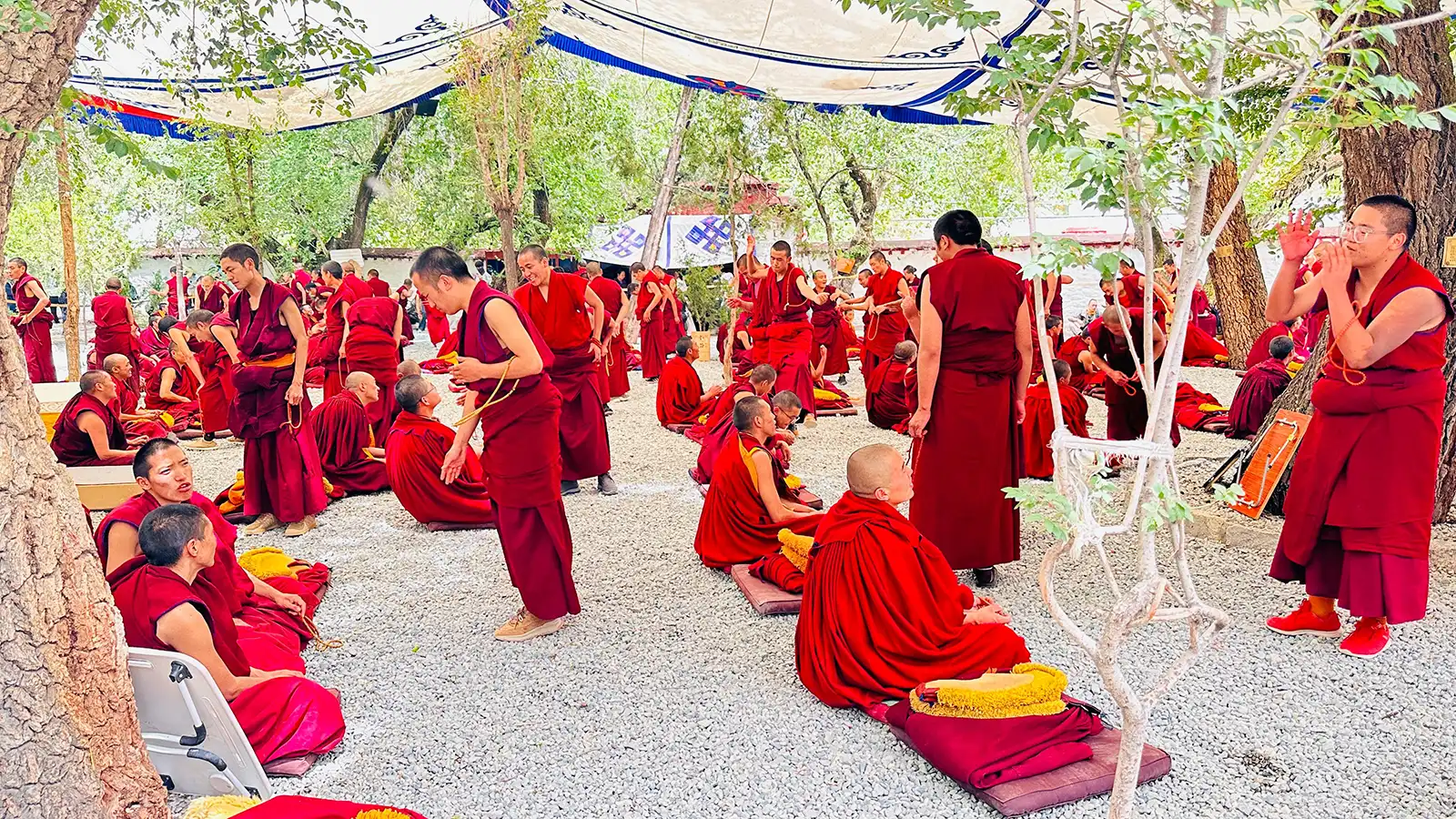
Planning Your Visit to Sera Monastery:
- Location: Sera Monastery lies roughly 5 kilometers north of Lhasa and is easily accessible by taxi or tour bus.
- Best Time to Observe Debates: The debates typically occur between 3 pm and 5 pm in the afternoons. Plan to arrive early to enjoy the best views, as the courtyard tends to fill up quickly.
Additional Tips:
- Dress Modestly: Respect local customs by dressing modestly, ensuring your shoulders and knees are covered.
- Maintain Silence: While observing the debates, avoid disrupting the ongoing practice.
- Photography: Photography is usually permitted, but be mindful of not using flash as it can be distracting.
A Glimpse into Tibetan Buddhism:
Witnessing the monk debates at Sera Monastery offers a unique opportunity to experience Tibetan Buddhist traditions firsthand. The vibrant exchange of ideas and the passionate delivery by the monks create a truly unforgettable experience. Include Sera Monastery on your list of places to visit in Tibet] and immerse yourself in the rich tapestry of Tibetan culture.
Drepung Monastery: Unveiling the Grandest Monastic University in Tibet
Drepung Monastery, a colossal complex near Lhasa, is the largest monastic university in Tibet. This architectural marvel and center of Buddhist learning is a must-visit among Tibet tourist attractions. Steeped in history and vibrant culture, Drepung Monastery offers a glimpse into the heart of Tibetan Buddhism. Here, we explore its historical background, delve into its current significance, and provide tips for exploring its notable sights.
A Legacy of Learning:
- Founded in 1416, Drepung Monastery was established by a revered disciple of Tsongkhapa, the founder of the Gelugpa school of Tibetan Buddhism.
- Thriving Institution: Drepung housed over 10,000 monks at its peak, making it a center of immense religious and scholarly influence. Today, it remains an active monastery with hundreds of resident monks.
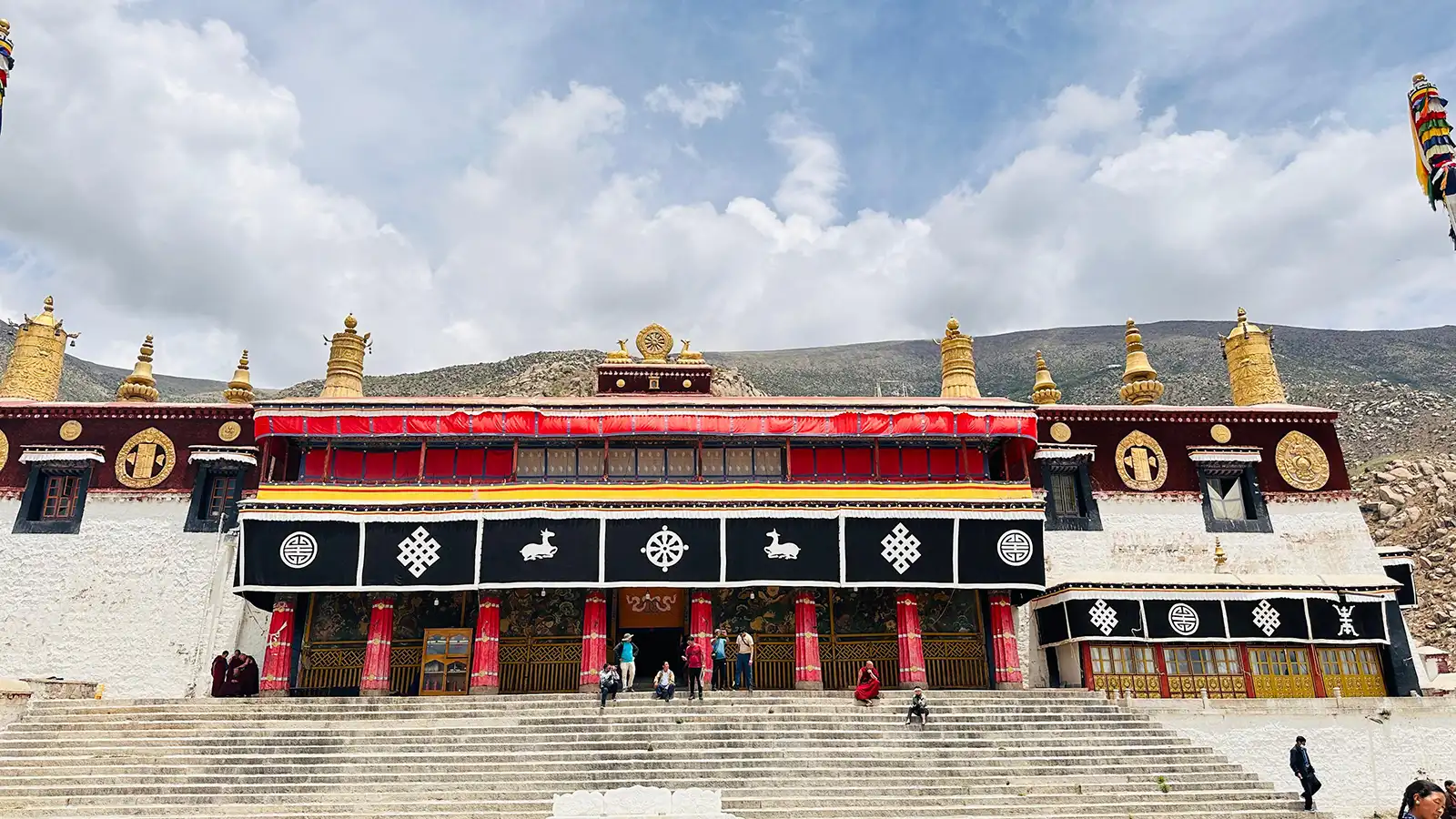
Exploring Drepung Monastery:
- Grand Architecture: The sprawling complex comprises numerous colleges, debating courtyards, and towering assembly halls. Wander through its labyrinthine corridors and marvel at the intricate Tibetan architecture.
- Notable Sights: Don’t miss the Ganden Phodrang Palace, the Dalai Lama’s former residence, before the Potala Palace’s construction. The Gyantse Serdang, a beautifully preserved printing house, offers a glimpse into the monastery’s rich history of scripture preservation.
Planning Your Visit:
- Location: Drepung Monastery lies roughly 5 kilometers west of Lhasa and is easily accessible by taxi or tour bus.
- Exploration Tips: Due to its vast size, consider hiring a guide to navigate the complex and provide insights into its history and significance.
- Respectful Exploration: Dress modestly and be mindful of local customs and religious practices while exploring the monastery.
A Journey Through Time:
Drepung Monastery offers a captivating journey through Tibetan history and Buddhist traditions. Witnessing the vibrant monastic life, exploring the architectural wonders, and learning about its scholarly legacy create a truly unforgettable experience. Include Drepung Monastery on your list of places to visit in Tibet and delve into the heart of Tibetan culture.
Unveiling the Soul of Tibet: Unmissable Cultural Festivals
Tibet’s vibrant tapestry extends far beyond its breathtaking landscapes. A kaleidoscope of colorful festivals unfolds throughout the year, offering a unique opportunity to experience the heart of Tibetan culture. These celebrations are considered Tibet tourist attractions in their own right, and they allow visitors to witness local traditions and the deep-rooted faith that permeates Tibetan life. Here, we explore the three most prominent festivals: Losar, Saga Dawa, and Shoton.
Losar: Ushering in the Tibetan New Year
Losar, the grand Tibetan New Year, marks the most important festival on the Tibetan calendar. Celebrations typically fall in February or March, dictated by the lunar calendar. Losar is a joyous occasion bursting with:
- Feasts and Family Gatherings: Families reunite for elaborate feasts, indulging in traditional dishes like momos (dumplings) and tsampa (roasted barley flour).
- Colorful Ceremonies: Monasteries come alive with vibrant prayer ceremonies and traditional music performances. Witness monks in bright robes engaging in unique rituals.
- Lion Dances and Performances: Streets throng with lively lion dances and folk performances, creating a festive atmosphere.
Saga Dawa: A Celebration of Holiness
Saga Dawa, the most sacred festival in Tibetan Buddhism, occurs in the fourth month of the Tibetan lunar calendar, typically aligning with May or June. This holy period is observed with:
- Pilgrimages: Devout Buddhists start on pilgrimages to sacred sites like Mount Kailash and Lhasa’s Jokhang Temple to gain merit.
- Releasing Captive Animals: Many Tibetans release captive animals back into the wild as an act of compassion, symbolizing liberation.
- Increased Piety: Monasteries hold special prayers and teachings, offering a time for spiritual reflection and growth.
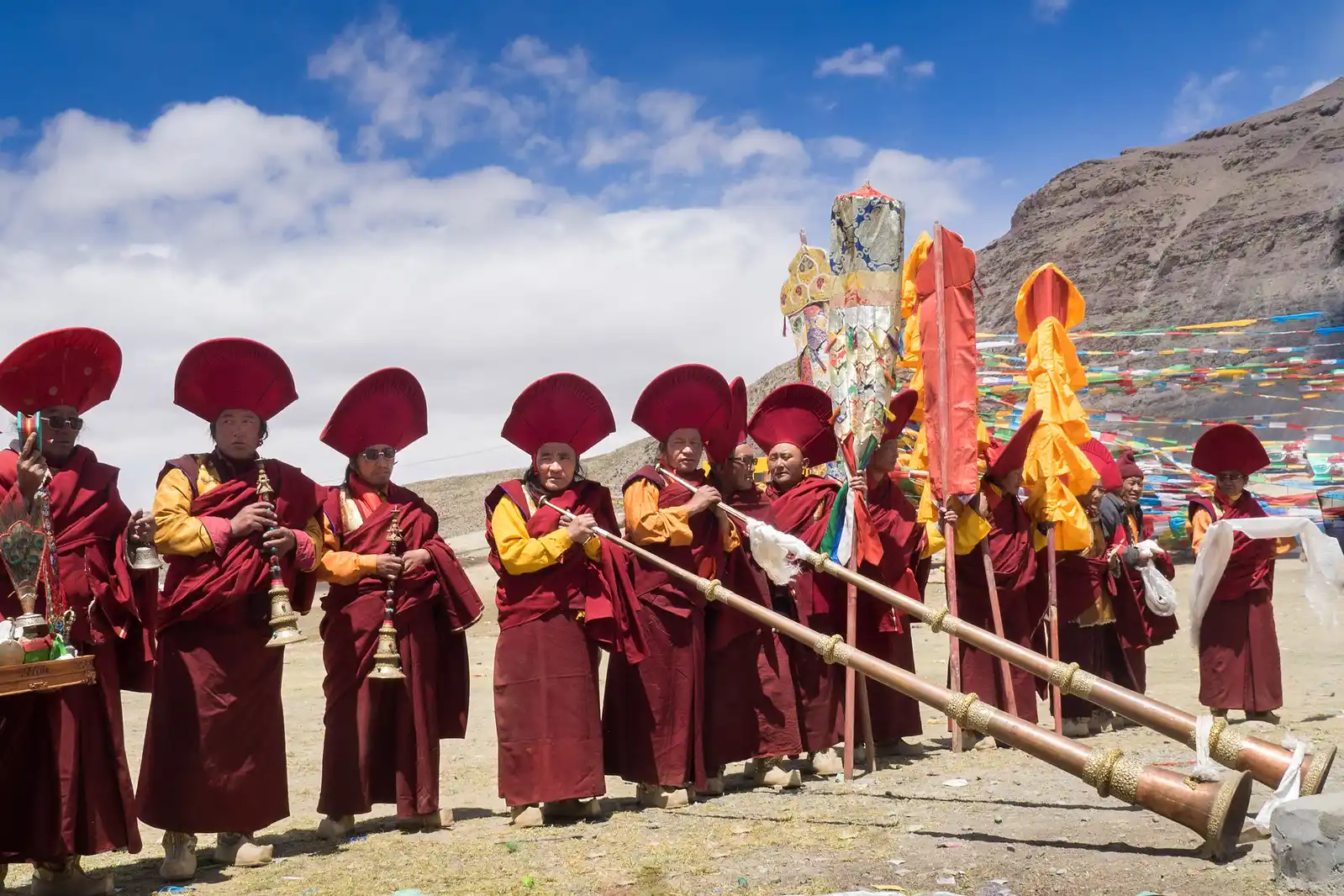
Shoton: The Yoghurt Festival
Shoton, also known as the Yoghurt Festival, takes place in the seventh month of the Tibetan lunar calendar, usually in August. This lively festival offers a welcome respite from the monsoon season and features:
- Open-air operas: Elaborate theatrical productions with vibrant costumes and traditional music are staged on open-air platforms.
- Yogurt Feasts: Participants display and consume large sculptures made from yak yogurt, symbolizing abundance and prosperity.
- Water Games and Festivities: The festival culminates in joyous water games, creating a lighthearted and playful atmosphere.
Planning Your Festival Experience:
- Research Dates: Tibetan festivals follow the lunar calendar, so dates vary yearly. Research specific dates before your trip to ensure you get all the details.
- Plan Accommodations: Book your accommodation well in advance, especially during major festivals like Losar, as hotels fill up quickly.
- Respectful Participation: Dress modestly and be mindful of local customs and religious practices while attending festivals.
Unforgettable Encounters Await
Tibetan festivals offer a captivating window into the soul of Tibet. Witnessing the vibrant celebrations, rich traditions, and deep faith is an experience that will leave a lasting impression. Consider incorporating these cultural gems into your list of places to visit in Tibet and start an unforgettable exploration of Tibetan culture.
Unveiling Tibet: Practical Tips for the best places to visit in Tibet
Tibet, the “Land of the Snows,” beckons travelers with its awe-inspiring landscapes, rich cultural heritage, and unique traditions. However, planning a trip to this captivating region requires careful preparation. Here, we explore essential travel tips to ensure a smooth and unforgettable experience, highlighting visa and permit requirements and health and safety considerations for visitors to Tibet.
Essential Permits and Visas:
- Chinese Visa: All visitors require a valid Chinese visa. Apply at your local Chinese embassy or consulate well in advance, as processing times may vary.
- Tibet Travel Permit: Foreigners require a special permit to enter Tibet. Obtain this through a licensed travel agency in China, as they handle the application process with the Tibet Tourism Bureau (TTB).
Health and Safety:
- Altitude Sickness: Tibet’s high altitude (most areas exceed 3,500 meters) can cause altitude sickness. Plan to acclimatize gradually in Lhasa before venturing to higher regions.
- Travel Insurance: Buy comprehensive travel insurance that includes coverage for medical emergencies, especially for high-altitude travel.
- Vaccinations: Ensure your routine vaccinations are up-to-date. Consider consulting a healthcare professional for recommendations on additional vaccinations specific to Tibet.
Additional Tips:
- Best Time to Visit: Spring (April-May) and autumn (September-October) offer pleasant weather with clear skies. Summer (June-August) experiences monsoon rains, while winters are harsh.
- Dress Code: Pack warm layers, comfortable walking shoes, and sun protection. Dress modestly, especially when visiting religious sites.
- Cultural Sensitivity: Respecting local customs and traditions is key to a positive cultural exchange. Photography restrictions may apply in some monasteries, so ask permission before taking pictures.
Unlocking the Magic of Tibet
Armed with these handy tips, you’re all set for a safe and unforgettable adventure through Tibet’s captivating sights. From obtaining the necessary permits to understanding the importance of acclimatization, careful planning goes a long way in transforming your Tibetan adventure into a cherished memory. So, pack your bags responsibly, embrace the cultural nuances, and prepare to be enchanted by the magic of Tibet.

